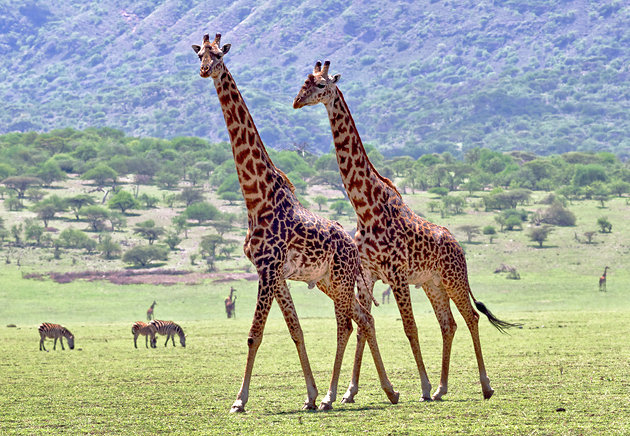WELCOME NGORONGORO CONSERVATION AREA.
Located near to Arusha and Serengeti.
It’s about 8,300sq km
The Ngorongoro Conservation Area spans vast expanses of highland plains, savanna, savanna woodlands and forests. Established in 1959 as a multiple land use area, with wildlife coexisting with semi-nomadic Maasai pastoralists practicing traditional livestock grazing, it includes the spectacular Ngorongoro Crater, the world’s largest caldera. The property has global importance for biodiversity conservation due to the presence of globally threatened species, the density of wildlife inhabiting the area, and the annual migration of wildebeest, zebra, gazelles and other animals into the northern plains
The stunning landscape of Ngorongoro Crater combined with its spectacular concentration of wildlife is one of the greatest natural wonders of the planet. Spectacular wildebeest numbers (well over 1 million animals) pass through the property as part of the annual migration of wildebeest across the Serengeti ecosystem and calve in the short grass plains which straddle the Ngorongoro Conservation Area/Serengeti National Park boundary. This constitutes a truly superb natural phenomenon.
The crater is a natural sanctuary for some 30,000 animals including the `Big Five’ consisting of buffalo, elephant, leopards, lion, and rhino. It is also home to cheetah, hartebeest, hippo, hyena, jackal, reedbuck, serval, warthog, waterbuck, wildebeest, zebra and a great many bird and insect species. Close to Ngorongoro Crater there are two less famous, and less visited, craters ideal for walking and hiking safaris. Empakaai Crater is about 6 km wide with steep walls rising to almost 300m. Half of the crater floor is covered by a deep salt water lake where eland and waterbuck may be seen. The trail down to the crater floor offers spectacular views of a still active volcano, Oldonyo Lengai, and, on a clear day, the snowy peaks of Mount Kilimanjaro. On the way down to the lake buffalo, bushbuck, blue monkeys and rare birds such as sunbirds and turacos may be seen.
Visit Ngorongoro crater
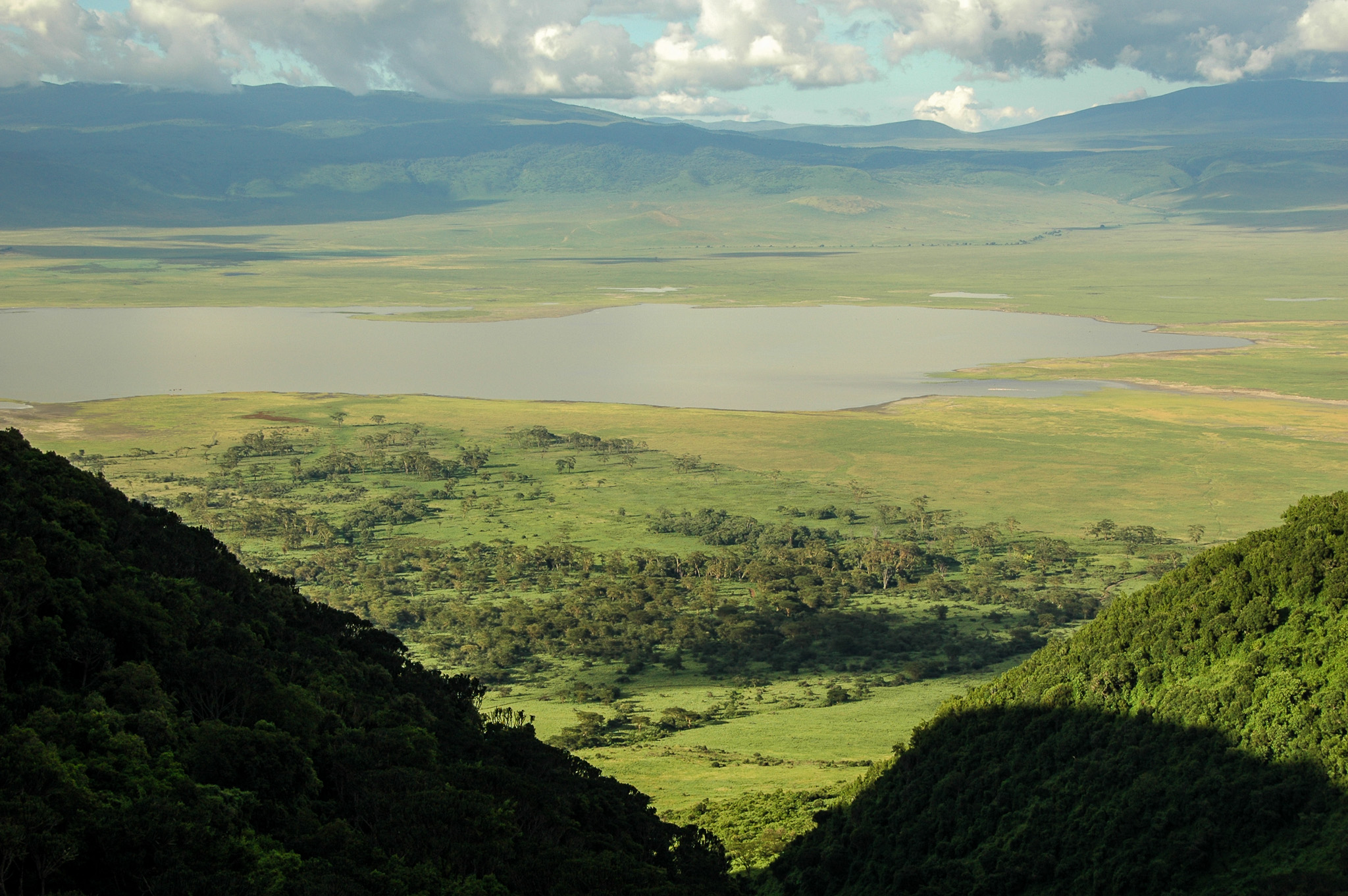
The Ngorongoro Crater and surrounding highlands together form one of Africa’s most beautiful regions. Volcanic craters form stunning backdrops to some of the most fertile and richest grazing grounds in Africa. The most famous such crater is without question Ngorongoro, the world’s largest intact volcanic caldera and home to the highest density of big game in Africa, including all the big five and plenty of predators. Ngorongoro is justifiably one of the continent’s most famous safari destinations.
About the Crater.
The Ngorongoro Crater is located in Tanzania’s conservation area and it’s the world’s largest unfilled volcanic caldera that is still inactive and intact. This crater was formed almost 3 million years ago when a large volcano exploded and collapsed on itself. It is 2,000 feet deep and the area spans almost 100 square miles. This means the actual volcano was at least 15,000 feet high.
The most enter visitors from different country come Tanzania to visit this place (Ngorongoro Crater) and leave them with unforgotten memories due to the presence of different features, animals and people who leave outside the crater who are the pastoralist (Maasai).
WILD LIFE OF NGORONGORO CRATER
The BID FIVE
In the crater is the home for those Big Five animals, the big five game animals are the African lion, African elephant, Cape buffalo, African leopard, and Rhinoceros. The term “big five game” (usually capitalized or quoted as “Big Five”) was coined by big-game hunters and refers to the five most difficult animals in Africa to hunt on foot. Subsequently the term was adopted by safari tour operators for marketing purposes. The term is used in most tourist and wildlife guides that discuss African wildlife safaris. The members of the Big Five were chosen for the difficulty in hunting them and the degree of danger involved, rather than their size.
The big five are among the most dangerous, yet most popular species for big-game hunters to hunt.
African elephant
The African elephant is a very large herbivore having thick, almost hairless skin, a long, flexible, prehensile trunk, upper incisors forming long curved tusks of ivory, and large, fan-shaped ears.Elephants are difficult to hunt because, despite their large size, they are able to hide in tall grass and are more likely to charge than the other species.
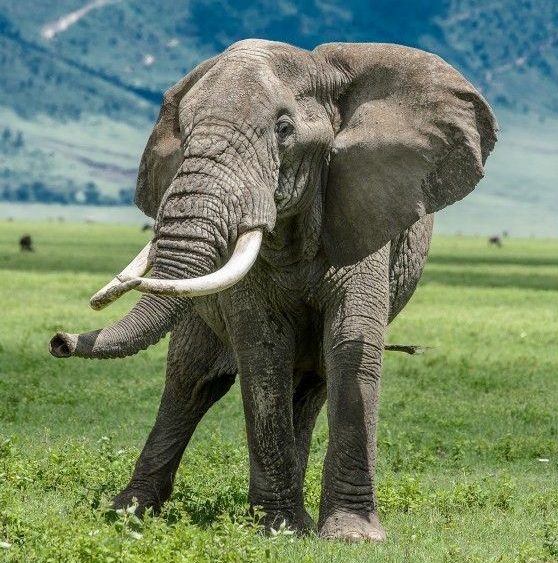
Big five Elephant.
Cape buffalo
The African Cape buffalo is a large horned bovid. Buffalo are sometimes reported to kill more hunters in Africa than any other animal. A similar claim is also made of hippos and crocodiles, but these statements include all people and not strictly hunters. The Cape buffalo is considered by many to be the most dangerous of the big five, reportedly causing the most hunter deaths, with wounded animals reported to ambush and attack pursuers.
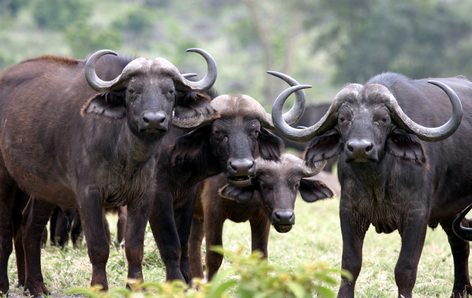
Cape buffalo
African lion.
The lion is a large carnivorous feline of Africa and northwest India, having a short, tawny coat, a tufted tail, and in the male, a heavy mane around the neck and shoulders. Lions are desirable to hunters because of the very real danger involved. A lion may attack without provocation, and is considered by many to be the best of the big five.
Lion hunting is challenging because of the habitat and temperament of the lion. Lions live in the savanna where tall grasses, shrubs, and bushes obscure them and provide cover and camouflage. This thick undergrowth is commonly referred to as “jess”. As lions are ambush hunters, they use this natural cover when stalking to creep as close as possible before making a final charge to catch their prey. Lions do not generally avoid confrontation, but will usually face a challenger. They are unpredictable and may charge when sufficiently annoyed or confronted by danger. These factors together make lion hunting a challenge to hunters.
Lions are hunted by three methods: baiting, stalking, and hounding. The hunting method is dependent firstly on the law, then the number of lions in a given area, the terrain, and the preference and expertise of the professional hunter, or of the concession owner or hunting outfitter and the client.
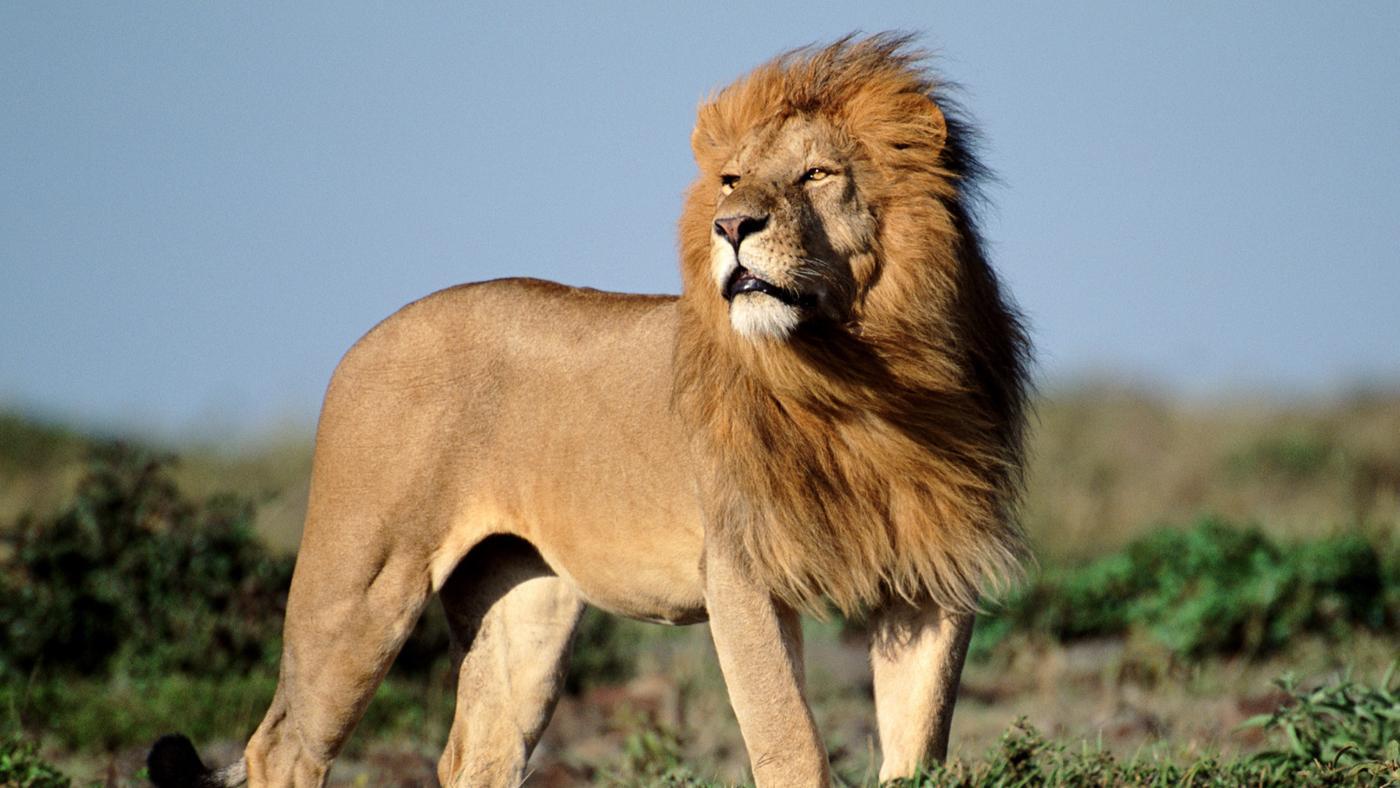
African lion
African Leopard.
The leopard (Panthera pardus) is a large, carnivorous feline having either tawny fur with dark rosette-like markings or black fur. Of the big five, it is most difficult to acquire hunting licenses for leopards. The leopard is considered the most difficult of the big five to hunt because of their nocturnal and secretive nature. They are wary of humans and will take flight in the face of danger. The leopard is solitary by nature, and is most active between sunset and sunrise, although it may hunt during the day in some areas. Leopards can be found in the savanna grasslands, brush land and forested areas in Africa. Baiting, hounding, and stalking are the most common methods used to hunt the cat.
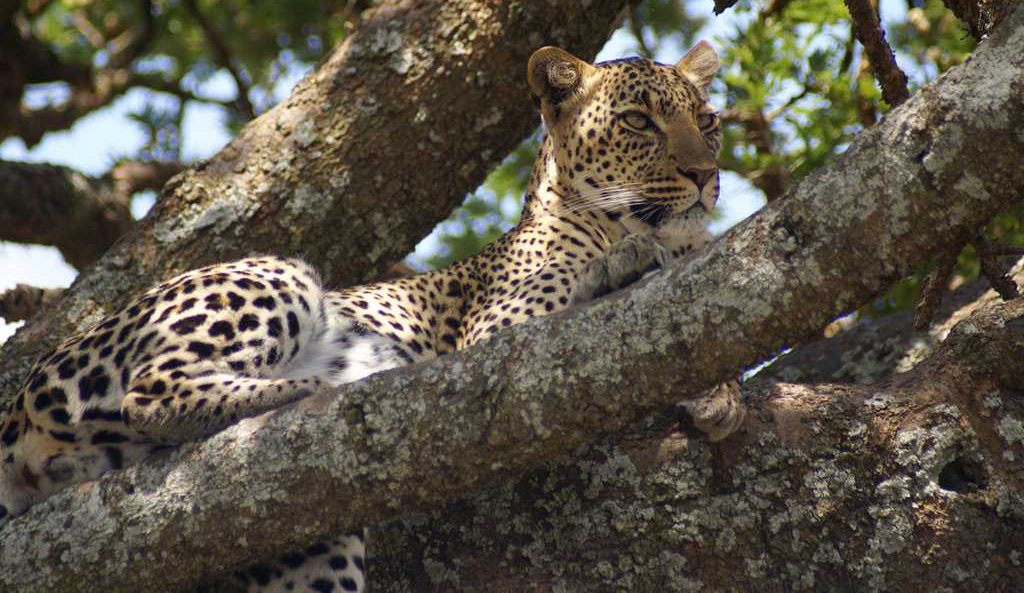
African Leopard.
Black rhinoceros (Diceros bicornis)
The black rhinoceros is a large, thick-skinned herbivore having one or two upright horns on the nasal bridge. Rhinoceros may refer to either black or white rhinoceros. Among big five game hunters, the black rhinoceros is preferred, although it is now critically endangered.
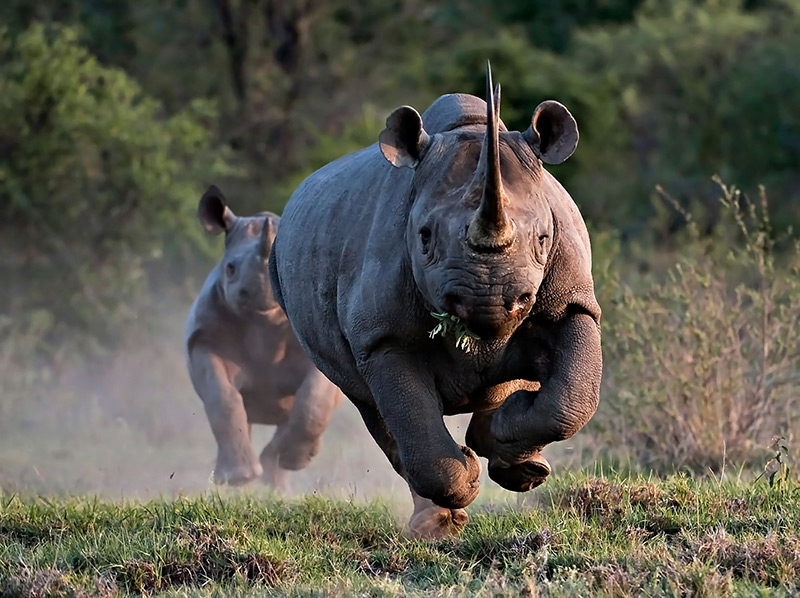
Black rhinoceros.
CONSERVATION CONDITIONS.
The African lion and the African bush elephant are both classified as vulnerable. The African leopard and the white rhinoceros are both classified as near threatened. The black rhinoceros and northern white rhinoceros are both classified as critically endangered, so hunting them is GREATLY RESTRICTED. The African buffalo is the most popular big five game animal to hunt, as its conservation status is least concern, but it is experiencing a population decline in uncontrolled areas due to poaching and urbanization.
NGORONGORO CRATER IS THERE FOR YOU
VISIT & ENJOY
YOUR DAY

